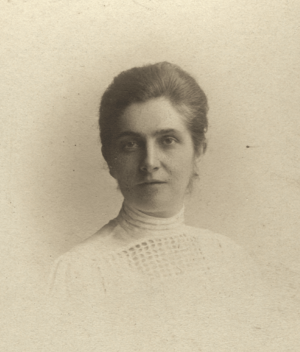Emilie Snethlage facts for kids
Quick facts for kids
Henriette Mathilde Maria Elizabeth Emilie (Mila) Snethlage
|
|
|---|---|
 |
|
| Born | April 13, 1868 Gransee-Kraaz, Brandenburg district, Germany
|
| Died | November 25, 1929 (aged 61) |
| Nationality | German |
| Citizenship | Brazilian |
| Alma mater | Albert Ludwig University of Freiburg in Breisgau |
| Known for | Amazonian ornithology |
| Awards | Brazilian Academy of Sciences |
| Scientific career | |
| Fields | Ornithology |
| Institutions | Museu Paraense Emílio Goeldi |
| Doctoral advisor | August Weismann |
| Influences | Emílio Goeldi, Bertha Lutz |
| Notes | |
|
This remarkable woman opened science
as a profession for Brazilian women. |
|
Maria Emilie Snethlage (born April 13, 1868 – died November 25, 1929) was a brave and smart scientist. She was born in Germany but became a Brazilian citizen. Emilie was a naturalist, which means she studied nature. She was also an ornithologist, a scientist who studies birds.
Emilie Snethlage spent many years studying the birds of the Amazon rainforest. She collected many bird samples in Brazil from 1905 until she passed away. She even became the director of a famous museum, the Museu Paraense Emílio Goeldi, from 1914 to 1922. She discovered and described several new types of birds.
Early Life and Education
Maria Emilie Snethlage was born in a small town called Kraatz in Germany. Her father, a pastor, taught her at home after her mother died. When she was 21, she passed an exam to teach young women. She also studied French and worked as a tutor in different countries.
Emilie loved nature from a young age. She read books about exploring fields and forests. She even sent notes about birds to a famous bird expert named Rudolf Blasius.
In 1899, at age 30, she decided to study natural history at the University of Berlin. Back then, it was very unusual for women to go to university. She faced strict rules, like having to sit behind a screen and not ask questions. But Emilie was determined! She continued her studies in other cities and earned her doctorate degree in 1904. She got the highest possible honors for her work on insect muscles.
After university, Emilie worked at the Berlin Natural History Museum. Soon after, a scientist named Emílio Goeldi invited her to work at his natural history museum in Belém, Brazil. She moved to Brazil in 1905.
Adventures in Brazil
Emilie Snethlage's work in the Brazilian Amazon was full of adventure. She traveled to far-off places to collect samples of birds and other animals. Her expeditions took her to remote areas like Acre.
From 1914 to 1922, she led the Museu Paraense Emílio Goeldi as its director. During this time, she wrote an important book called Catálogo das Aves Amazônicas (Catalog of Amazonian Birds). In 1915, she was honored by the British Ornithologists' Union.
In 1921, Emilie moved to the National Museum in Rio de Janeiro. She continued her bird studies, traveling to many different states in Brazil. She explored Minas Gerais, Maranhão, Ceará, and many other regions.
Emilie was incredibly brave. On one expedition in 1914, a piranha bit her finger. The injury became infected. To save her life, she had to cut off her own middle finger with a machete. This shows how dedicated and tough she was!
Emilie Snethlage passed away from heart failure in Porto Velho, Rondônia, while on a field trip. She was buried there. In her last letter, she mentioned meeting another famous collector, Margaret Fountaine, who collected butterflies.
Emilie's nephew, Emil Heinrich Snethlage, also became a well-known scientist who studied different cultures.
Legacy and Discoveries
Emilie Snethlage left a lasting mark on science. She discovered and named a new bird species called the Snethlage's tody-tyrant (Hemitriccus minor).
Other scientists have honored her by naming animals after her. For example, the Madeira parakeet (Pyrrhura snethlageae) was named after her in 2002.
She is also remembered in the names of other animals:
- The Emilia's marmoset (Mico emiliae), a type of monkey, is also known as Snethlage's marmoset.
- Two species of South American reptiles:
- A snake called Atractus snethlageae.
- A lizard called Loxopholis snethlageae.
See also
 In Spanish: Maria Emilie Snethlage para niños
In Spanish: Maria Emilie Snethlage para niños

